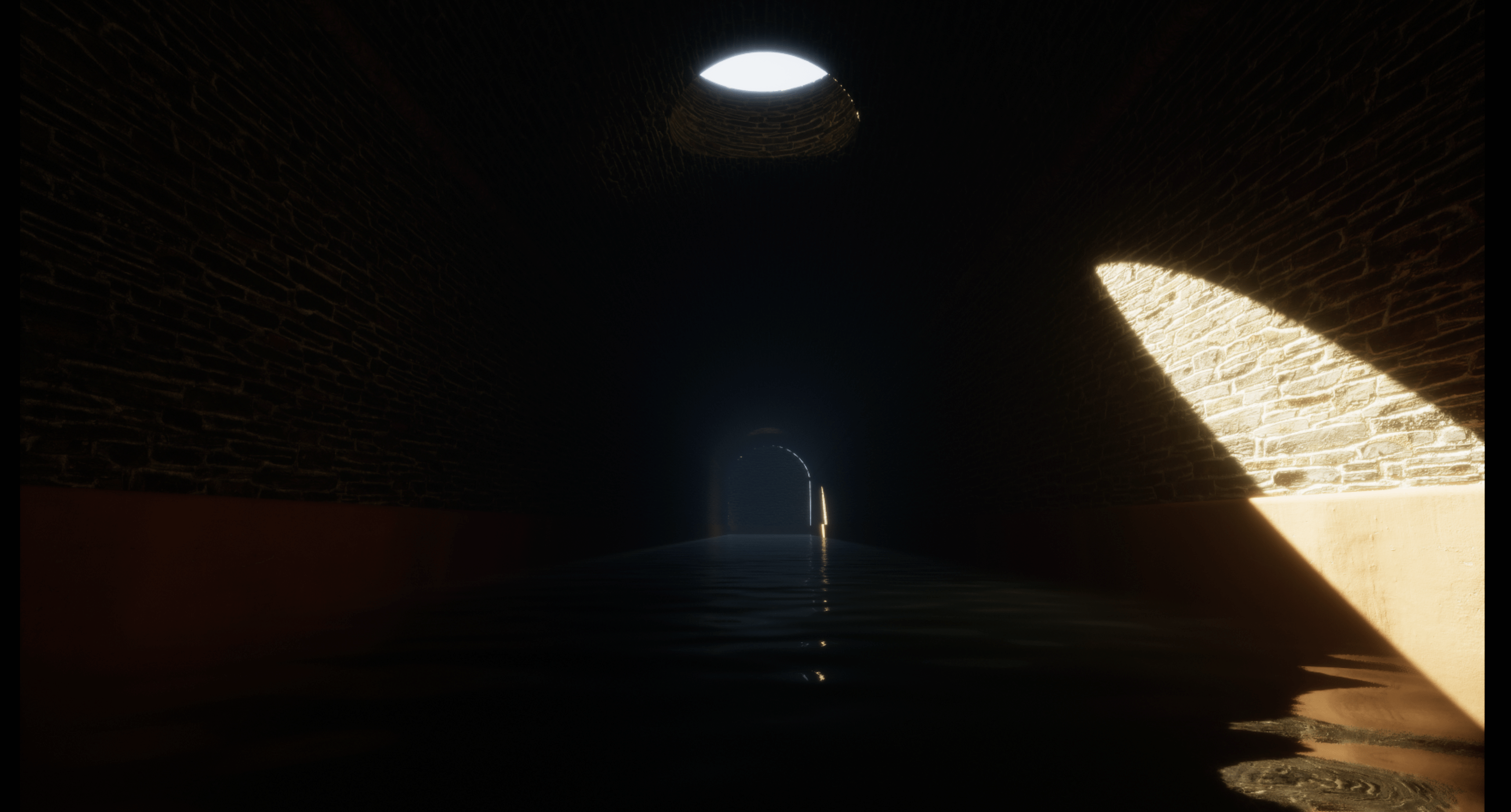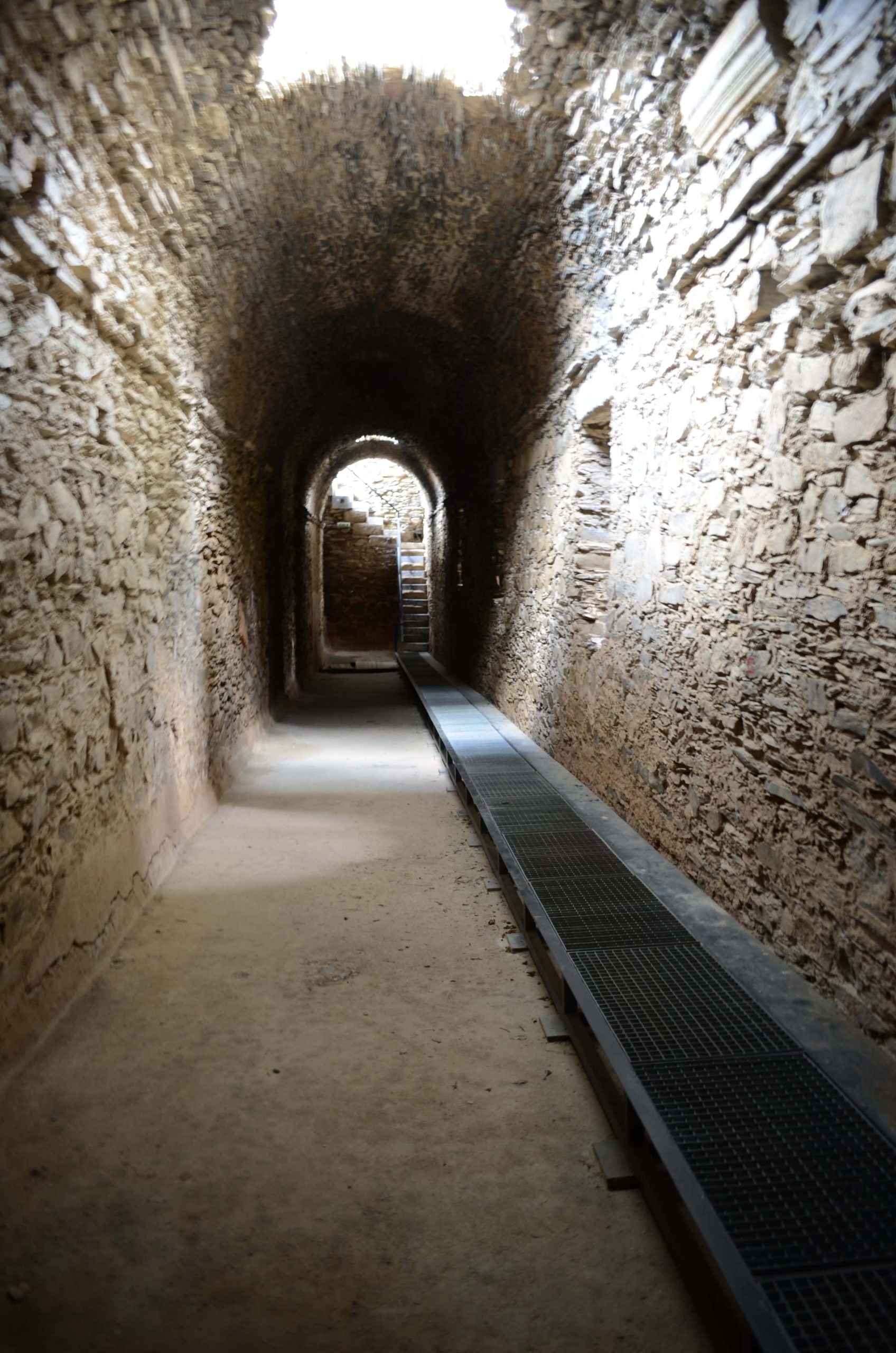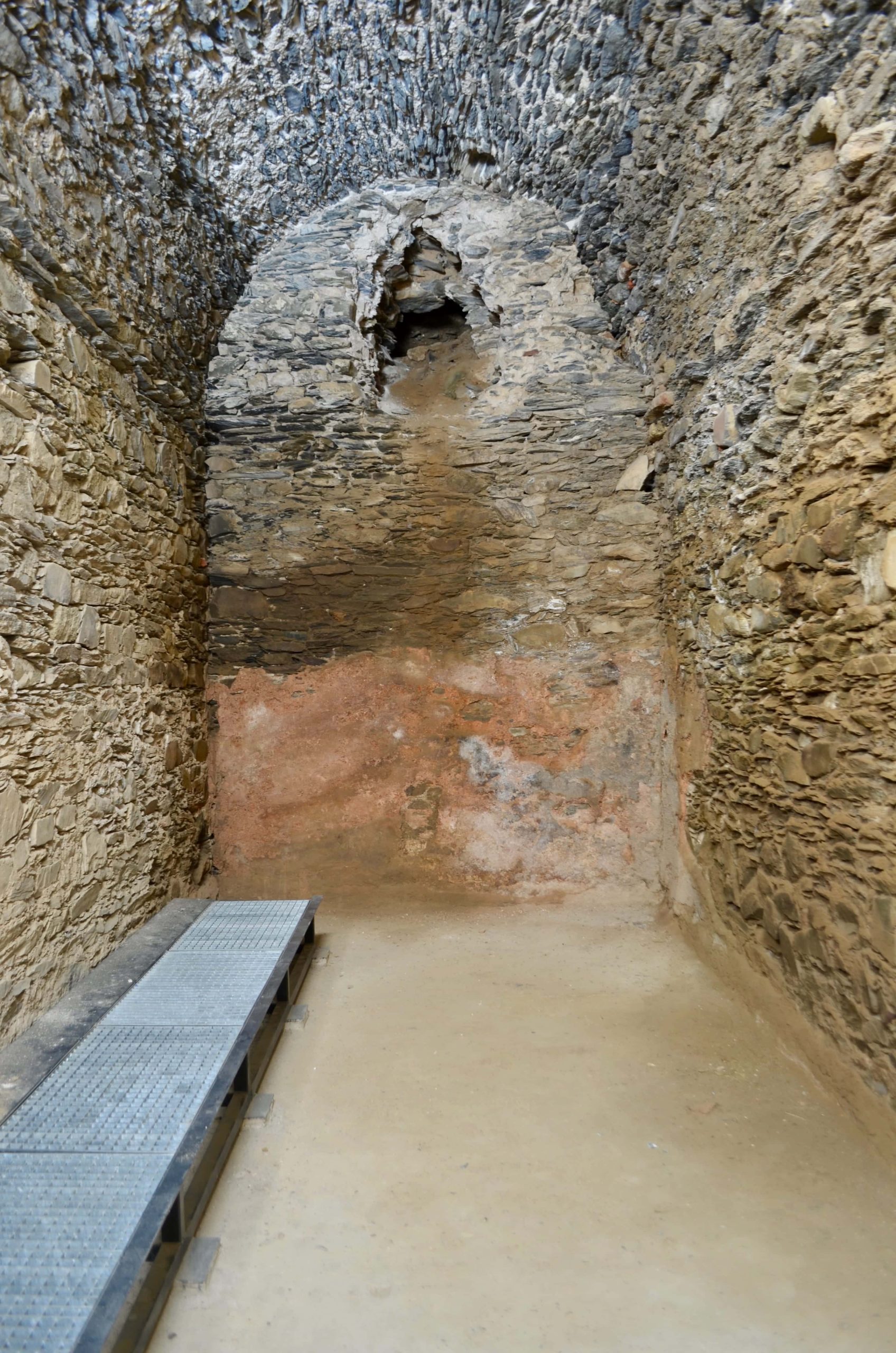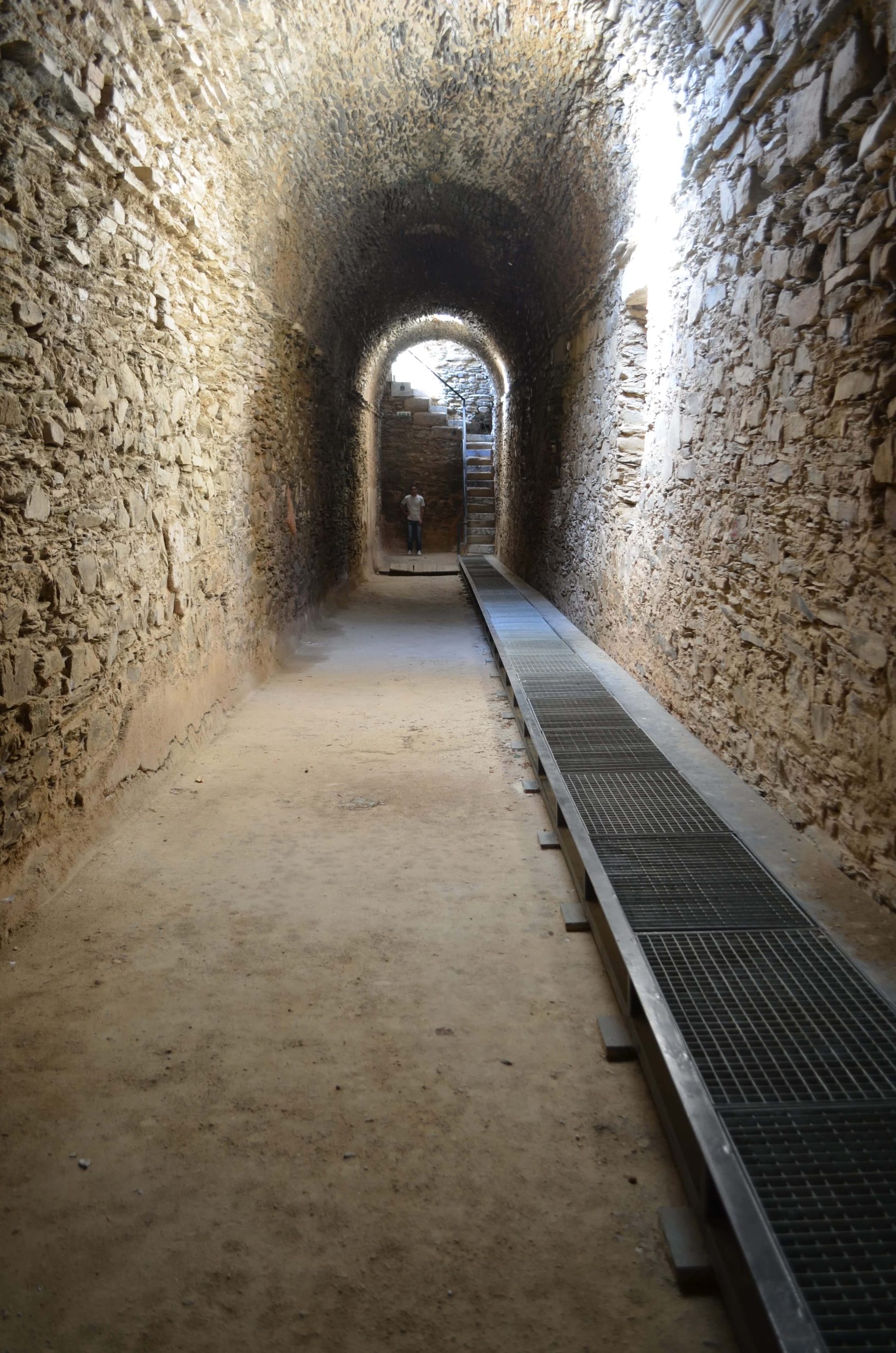The religious complex, Mértola
The Cryptoporticus
37º38'19.99"N / 7º39'51.86"O
Tuesday to Sunday
Morning: 9:10 AM to 12:30 PM / Afternoon: 2:00 PM to 5:20 PM;
Closed on Mondays and on national holidays (January 1st, May 1st, Easter Sunday,
and December 25th), and on December 24th (Christmas Eve).
About
The Cryptoporticus
The construction of the cryptoporticus on the Northern slope of the castle hill, possibly in the late 4th century, allowed to create an artificial platform in the present-day Citadel. This structure was used as an underground circulation gallery between two entrance doors of the defensive wall that was built at the time. One was located to the West and the other to the East; there are traces of the latter in the South wall, which led to the road to Pax Iulia (Beja).
This gallery was covered by a barrel vault, 32 meters long by 2.70 meters wide and 5.80 meters tall. It was built using local schist bound by mortar. Its defensive character is perceived in the original existence of four arrowslits, which were later covered when the structure was converted into a cistern – with a storage capacity of 138 m³. The final use of this space was as a dumpster for the Almohad neighbourhood of the Citadel.
In the 5th or 6th century, a portico flanked with columns was built above the cryptoporticus. It had an unusual mosaic floor representing a scene of a knight hunting with a hawk, and geometrical, vegetal, and animal representations, some of which did not exist in this territory, such as lions, leopards, and ostriches. This may demonstrate that the workers who built these mosaics came from the Eastern Mediterranean or Northern Africa.
Access
Prepare your visit
Free entrance.
Children should always be accompanied by a responsible adult.
Reduced mobility
It is not accessible to people with reduced mobility (wheelchairs and baby strollers) due to several architectural obstacles.
Guided tours
It is possible to book a guided tour to this space for groups of over 10 people, but you must book IN ADVANCE, at least 48 hours before. Contact the Mértola Tourism Office (286 610 109).
Support
RESEARCH
Bibliography & useful links
ALARCÃO, Jorge de (1988). Roman Portugal: Gazetteer, Volume II, Fasc. 3 – Évora, Faro & Lagos. Aris & Philips LTD, Warminster, pp. 201-203.
BOIÇA, Joaquim Manuel Ferreira; MATEUS, Rui (2014). Mértola: Roteiro de história urbana e património. Associação de Defesa do Património de Mértola, Mértola, p. 70-72.
GÓMEZ MARTÍNEZ, Susana, coord. (2014). Museu de Mértola. Catálogo Geral, Campo Arqueológico de Mértola, Mértola, pp. 64-83.
GÓMEZ MARTÍNEZ, Susana (2022). Poblamiento Emiral en el Garb Al-Andalus. In Arqueologia & História, A Península Ibérica entre os séculos V e X – Continuidades, Transição e Mudança, 73, Associação dos Arqueólogos Portugueses, Lisboa, pp. 187-206. Disponível em: https://www.museuarqueologicodocarmo.pt/publicacoes/arqueologia_historia/serie_13/Vol_73/P1_art15_AH_Vol73_web.pdf [Consultado a 27 de março de 2023].
LOPES, Virgílio (2003). Mértola na Antiguidade Tardia: a topografia histórica da cidade e do seu território nos alvores do cristianismo. Campo Arqueológico de Mértola, Mértola, pp. 86 -89.
LOPES, Virgílio (2014a). Mértola na Antiguidade Tardia. In O Sudoeste Peninsular entre Roma e o Islão. Campo Arqueológico de Mértola, Mértola, pp. 138-165.
LOPES, Virgílio (2014b). Mértola e o seu território na antiguidade tardia (séculos IV-VIII). Tese de Doutoramento apresentada ao Departamento de Historia I da Universidad de Huelva. Disponível em: http://hdl.handle.net/10272/8053 [Consultado a 27/03/2023].
LOPES, Virgílio (2015). La Antigüedad tardía en Mértola. In Onoba, 3, pp. 105-128. Disponível em http://hdl.handle.net/10272/10772 [Consultado a 27/03/2023].
LOPES, Virgílio (2017). Mértola na Antiguidade Tardia. A Topografia Histórica. In ARNAUD, José Morais; MARTINS, Andrea, Arqueologia em Portugal: 2017 – Estado da Questão, Associação dos Arqueólogos Portugueses, Lisboa, pp. 1379-1390. Disponível em: http://museuarqueologicodocarmo.pt/publicacoes/outras_publicacoes/II_congresso_actas/Artigo103_ArqPort_2017.pdf [Consultado a 28/03/2023].
LOPES, Virgílio (2022). Mértola e o seu território na Antiguidade Tardia. In Arqueologia & História, A Península Ibérica entre os séculos V e X – Continuidades, Transição e Mudança, 73, Associação dos Arqueólogos Portugueses, Lisboa, pp. 107-119. Disponível em: https://www.museuarqueologicodocarmo.pt/publicacoes/arqueologia_historia/serie_13/Vol_73/P1_art07_AH_Vol73_web.pdf [Consultado a 27 de março de 2023].
MACIAS, Santiago (2005). Mértola: O último porto do Mediterrâneo. Catálogo da exposição Mértola – história e património: séculos V-XIII, III vols. Campo Arqueológico de Mértola, Mértola.
MACIAS, Santiago (2011). Mosaicos de Mértola. Arte Bizantina no Ocidente Mediterrânico, Câmara Municipal de Mértola, Mértola. Disponível em: https://www.academia.edu/35746421/MOSAICOS_DE_M%C3%89RTOLA [Consultado a 29/03/2023].
TORRES, Cláudio; OLIVEIRA, José Carlos (1987). O criptopórtico-cisterna da Alcáçova de Mértola. In II Congreso de Arqueología Medieval Española, Tomo II, Consejería de Cultura, Dirección General de Patrimonio Cultural, Madrid, pp. 617-626.



